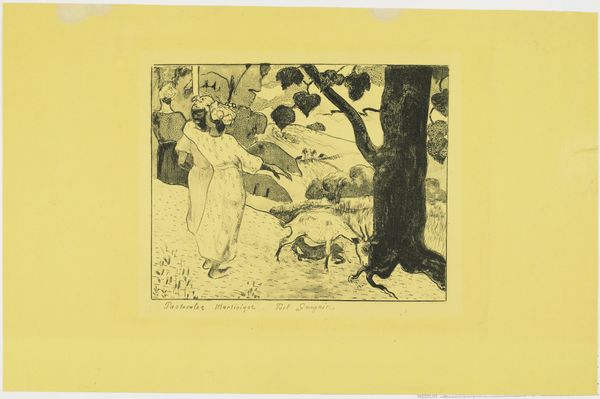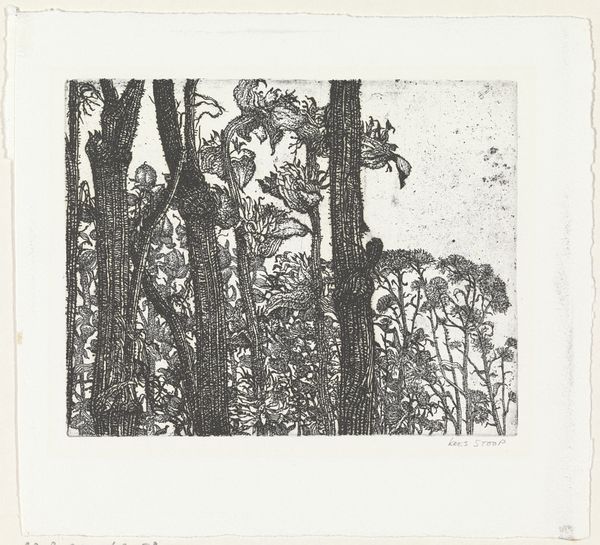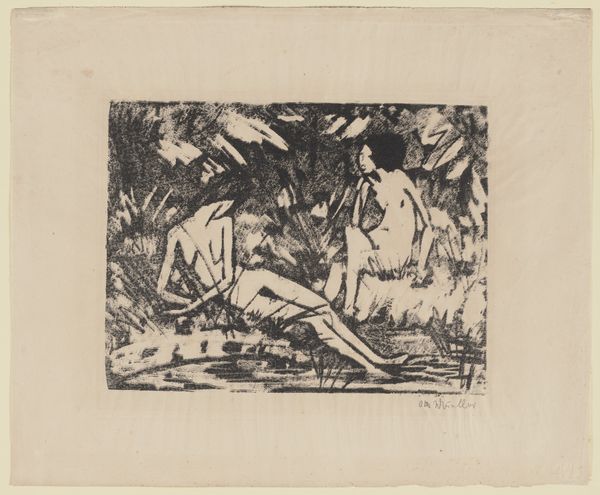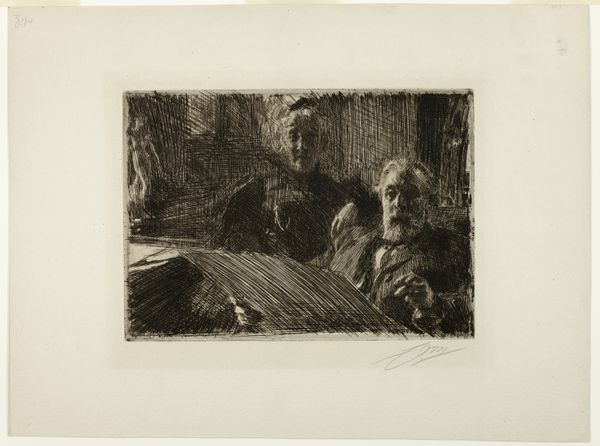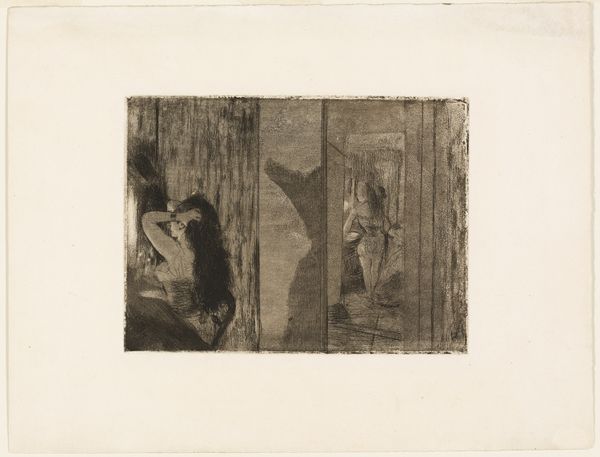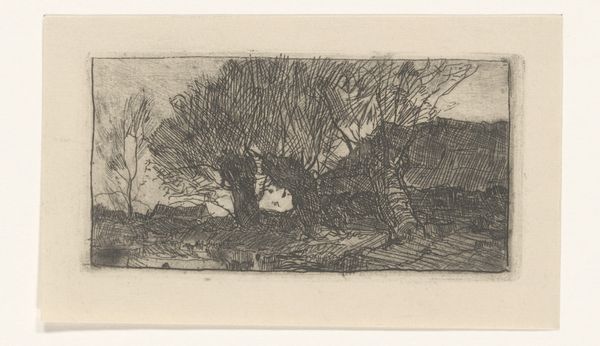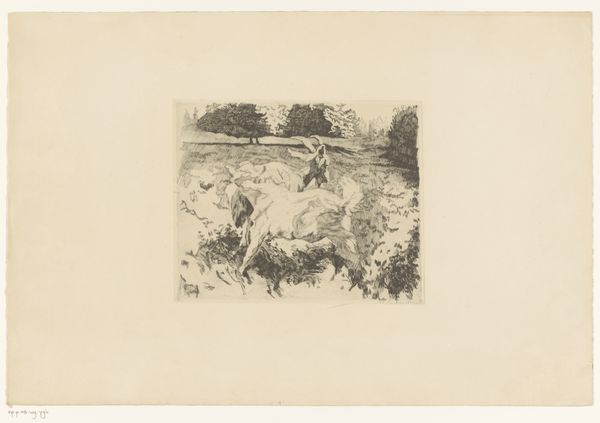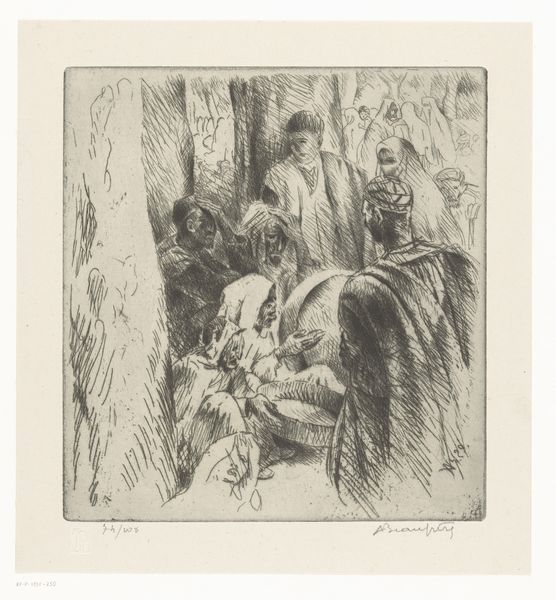
drawing, print, etching, paper
#
portrait
#
drawing
#
narrative-art
# print
#
etching
#
paper
#
expressionism
#
symbolism
#
northern-renaissance
Dimensions: 280 × 380 mm (plate); 444 × 604 mm (sheet)
Copyright: Public Domain
Curator: This etching, "Adam and Eve," was completed by Edvard Munch in 1915, a time of great social and personal upheaval that resonates strongly within this piece, now residing here at the Art Institute of Chicago. Editor: It has an almost oppressive quality, wouldn’t you agree? The sharp contrasts, the rough, almost crude lines, and the figures seem so stiff. Curator: Absolutely. Munch is grappling with complex narratives here, connecting themes of love, loss, and the fall from innocence to a modern, psychological space. The story of Adam and Eve becomes a framework for exploring modern anxieties surrounding gender roles and forbidden knowledge in his society. The symbolism drips with existential weight. Editor: From a structural perspective, the composition, with the stark division of space and almost blocky figures, conveys an unnerving sense of separation, despite their proximity. There's a dissonance even in how Munch handles line weight; where it's emphasized, and where it nearly disappears altogether, which contributes to the overall tension. Curator: Consider the period: just prior to and during the height of World War I. Munch lived through an era defined by the fragility of life. It is said his family had a history of mental illness which affected his art. It stands to reason that “Adam and Eve” offers more than simply an interpretation of the biblical story; it becomes a lens through which we might investigate trauma. This representation deviates so far from idyllic visions of the biblical figures—they are clearly products of their tumultuous cultural climate. Editor: True, there’s none of the traditional serenity associated with that scene, is there? Looking again at how Munch rendered their faces… even the hatching seems to suggest inner turmoil and doubt. It is particularly clear around their eyes and mouths which seem warped, caught between expressions. Curator: So we can agree, then, that this work invites an array of layered discussions, revealing how our understanding of gender and sin, innocence and experience, war and illness is inherently constructed and inevitably evolves. Editor: Yes, from a formal reading, “Adam and Eve” is not only aesthetically compelling, but showcases the enduring potential for semiotics in examining works of art that provoke deep contemplation on human emotion and cultural contexts.
Comments
No comments
Be the first to comment and join the conversation on the ultimate creative platform.

